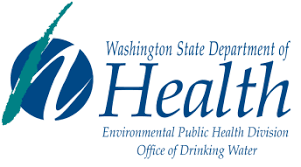IMPORTANT INFORMATION ABOUT LEAD IN YOUR DRINKING WATER
The Town of Wilson Creek found elevated levels of lead in drinking water in a single location in August 2017.
Lead can cause serious health problems, especially for pregnant women and young children. Please read this information closely to see what you can do to reduce lead in your drinking water.
Health Effects of Lead
Lead can cause serious health problems if too much enters your body from drinking water or other sources. It can cause damage to the brain and kidneys, and can interfere with the production of red blood cells that carry oxygen to all parts of your body. The greatest risk of lead exposure is to infants, young children, and pregnant women. Scientists have linked the effects of lead on the brain with lowered IQ in children. Adults with kidney problems and high blood pressure can be affected by low levels of lead more than healthy adults. Lead is stored in the bones, and it can be released later in life. During pregnancy, the child receives lead from the mother’s bones, which may affect brain development.
For more information, call us at (509) 345-2531. For more information on reducing lead exposure around your home/building and the health effects of lead, visit EPA’s website at http://www.epa.gov/lead or contact your health care provider.
Fact sheet from the Washington State Department of Health, July 2016
How Lead Gets Into Water

Lead in drinking water usually comes from water distribution lines or household plumbing rather than lakes, wells or streams.
Most exposure to lead comes from dust and chips from interior and exterior lead-based paint removal, lead-contaminated soil, industrial sources, and materials that contain lead used in parental occupations or hobbies. Lead from all of these sources contribute to a person’s overall lead exposure.
Measuring Lead in Drinking Water
Lead may be present in your home drinking water if:
- There are lead or galvanized steel pipes, brass fixtures, or lead connectors in your home or community water system.
- Your home was built before 1986. Older homes may contain lead solder or lead plumbing materials.
- You have soft water (low mineral content), or acidic water.
The only way to know the amount of lead in your household water is to have your water tested. Many certified labs in Washington perform these tests for $25 to $50 per test. To find a certified drinking water lab near you, see Department of Ecology’s list of certified labs (link to list is below).
Drinking Water Regulations
We require public water systems to:
- Collect samples from customers’ homes, targeting homes that contain lead plumbing materials.
- Treat the water when more than 10 percent of samples exceed the action level (0.015 partsper million).
- Provide annual public education to all consumers when more than 10 percent of samples exceed the action level for lead.
Reducing Lead Exposure in Drinking Water
Ways to reduce lead in home drinking water:
- If you live in a house built before the mid-1940s, run your tap at least 2 minutes after water sits in the pipes for 6 hours or more. The longer the water sits in your home’s pipes,the more lead and other dissolved metals the water may contain.
- If you live in newer housing and are concerned about lead, flush your pipes by running your tap until the water is noticeably cooler.
- Use only cold water for drinking, cooking, and making baby formula. Hot water is more corrosive and may contain higher levels of lead.
- Clean the screens and aerators in faucets frequently to remove captured lead particles.
- If building or remodeling, only use “lead free” piping and materials for plumbing.
Health Issues
Lead is in all parts of our environment — the air, soil, water, and even inside our homes. Much of our exposure comes from past use of lead-based paint, leaded gasoline, and lead-emitting industry. Lead from all of these sources can contribute to a person’s overall lead exposure.
Children under 6 years of age are most susceptible to the effects of lead because their brains and nervous systems are still developing. Even very low levels of lead in
a child’s blood can affect IQ, ability to pay attention, and academic achievement. The effects of lead exposure can’t be corrected.
Lead is a concern for pregnant women too, because it could affect the developing baby. There may be no obvious symptoms of lead toxicity. People exposed to and affected by lead may not act or look sick. If you have concerns, talk to your health care provider. A blood test is the only way to find out whether someone has elevated blood lead.
For More Information
Visit the Office of Drinking Water at www.doh.wa.gov/CommunityandEnvironment/DrinkingWater or call:
Southwest Region, Tumwater: 360-236-3030
Northwest Region, Kent: 253-395-6750
Eastern Region, Spokane Valley: 509-329-2100
General Information: 800-521-0323
Visit Department of Health’s Childhood Lead Poisoning Prevention Program at www.doh.wa.gov/lead or call 800-909-9898.
Visit the Department of Ecology’s Laboratory Accreditation Unit for list of accredited drinking water labs at www.ecy.wa.gov/programs/eap/labs/documents/DWLabs_WAByCounty.pdf.
A PDF of this information is available here: Lead in Drinking Water
